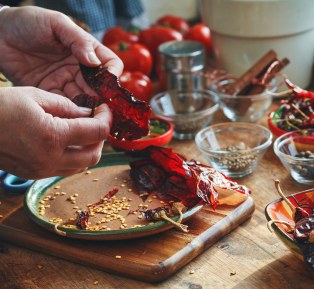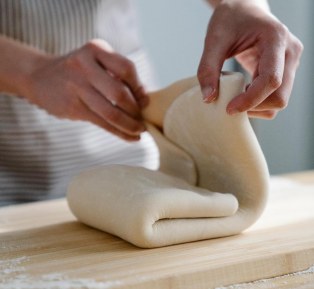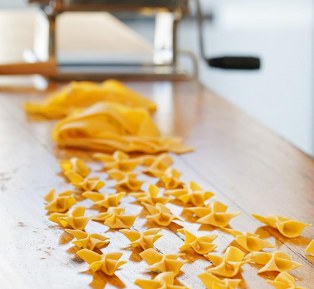
Culinary Inspiration by Otao Kitchen
Cook . Connect. Celebrate
At Otao Kitchen, we believe cooking is one of the most powerful ways to connect—with yourself, your loved ones, and the world around you. It can put a smile on your face, bring family and friends together, and create memories that last a lifetime.
But cooking is more than just connection—what you choose to cook and eat impacts your health and the health of the planet. That’s why we’re passionate about making it as easy and enjoyable as possible for everyone to experience the joy of good, home-cooked food.
“Cook to Connect” is at the core of everything we do. Through our blog, food experiences, and global travel inspiration, we explore the deep relationships between cuisine, culture, and community. From vibrant street food across the globe to time-honoured family recipes passed through generations, we share with you the stories, flavours, and traditions that shape the way the world eats.
Here, you’ll find:
Practical cooking tips and techniques
Authentic global recipes
Cultural and culinary insights
Event planning advice
Kid-friendly cooking inspiration
Travel stories and destination food guides
Seasonal celebrations and global food festivals
Whether you're in your home kitchen or exploring a faraway land, we’re here to help you cook with purpose—and connect with the world through food.
How To Engage Your Staff and Enhance Corporate Virtual Event
Most physical events have been on hold for the past six months. While corporate events will likely be the first to make a full comeback, many companies we spoke to delayed all live business meetings well into 2021. When you hold corporate events, they will be mainly Zoom webinars during the pandemic, but these types of interactions won't deliver results long-term. With the live stream becoming the default meeting room, how do you enhance these experiences to make an impact on your team? Read more to get you some ideas?
10 Tips For Planning A Company Conference and Event?
Looking for Planning A Company Conference and Event? You’ve come to the right place. We’ve seen a lot of business events over the years, and there are ten steps we’ve identified as key to a successful event. This guide may not be all of what you need to do because it will depend on the type of event you are holding, we can suggest some best practices that are important to follow for any event.
Event Planning Trends in 2020
Business event future is shrouded in uncertainty which the outlook depends on several factors in Australia and overseas such as resurgences of the virus, medical advances, restrictions on travel, the economy at large after easing restriction. The industry will bounce back. After all, we can't wait to see other people face-to-face because we like a strong sense of community and other people. Speak to many of our event planners, they share with us:
How To Incorporate Teas To Your Daily Meal
Drinking tea is an ancient tradition when it comes to human civilization. It’s even been estimated that the Chinese have been drinking tea for over 10,000 years. All true teas come from the plant Camellia Sinensis, and there are four basic types of true teas derived from this plant. These teas are green, black, white, and oolong tea. All of these have many health benefits, and the difference between them lies on the degree to which the leaves of the plant are oxidized.
Although drinking is the most popular way people consume tea, there are other ways that you can incorporate this in your daily meals. Here are six of them:
How Do You Buy Spices Directly From India?
How to Buy Real Indian Spices Directly From the Source
Fragrant, rich Indian spices awaken the senses, bring health and unlock the secret to creating authentic dishes! It's hard to live a life without authentic Indian cardamom, coriander, cumin, black pepper, turmeric and more once you've experienced these flavors! Some popular Indian spices are added at the final stage of preparation to create a perfect finish. Others are heated to perfection in a pan with ghee before being poured over a simmering dish. Here's a rundown of the best ways to use Indian spices when whipping up authentic dishes:
- Marinating.
- Frying spices in hot oil.
- Stirring Indian spices into sauces.
Of course, some people simply like to use real Indian cinnamon, ginger, nutmeg or cloves to create hot elixirs that are full of antioxidants and anti-inflammatory properties. One of the best things about Indian spices is that their quality and potency allow for "a dash" to do! That means that going with quality will allow you to use less product because you'll be getting vibrant, potent flavors in every pinch.
Anyone who has ever been on a quest to get their hands on authentic Indian spices knows that it can be hard to find the real deal. Unfortunately, the spices that you find on the shelves at the grocery store can be quite tasteless and bland. How can you get real Indian spices at home? It turns out that your home can turn into spice central with a little bit of digging for real Indian spices online! Let's explore why getting a true taste of India may be easier than you think!
How Do You Buy Spices Directly From India?
The best way to buy Indian spices directly from India is to go straight to the source. You'll want to find genuine sellers located in India to avoid issues with quality or authenticity. It used to be extremely difficult to track down spice merchants in India if you weren't in the industry. However, many spice sellers in India today actually list their products on major selling platforms like Amazon and eBay. You can also typically buy directly from spice sellers without going through a third-party platform by using "bulk spices from India" or a similar search term.
The key to making sure you're getting authentic Indian spices is to check where your spices will be shipped from once you place an order. Always check to see that sellers are located in India when purchasing on a major site like Amazon. Generally, it pays to place a bulk order of spices to ensure that you'll get a good rate without the need to pay new shipping fees the way you would if you ordered small batches. The fact that most Indian spices are dried means that they have long shelf lives.
Paying for Spices Shipped Directly From India
The payment methods that you typically use when making purchases online may not apply when making an international purchase from India. It's possible that the merchant you're purchasing your spices from may prefer that you send a money transfer to India. This request shouldn't intimidate you. It's actually quite easy to simply complete a money transfer to someone in India via a widely used company like Western Union.
Real Indian Spices Don't Have to Be a World Away
Many of the spices for sale at mainstream grocery stores really are a dime a dozen. The truth is that you need to source spices from India if you want the real deal in your kitchen. Start stocking up your pantry with the tastes and fragrances of India today!
How To Chose Wok & Pan Guide
Choosing Pots and Pans to Improve Your Cooking? Rather than having a rack filled with pots and pans of all shapes and sizes, owning a few pieces will give you the flexibility to cook whatever you want and the performance you need to cook it better.
Popular Indian Spice Blends
One popular spice mix is garam masala, a powdered blend that typically has five or more dried spices. These can include cardamom, black pepper, coriander, cumin, cinnamon, nutmeg and clove. Each culinary region (even household) has a distinctive garam masala blend and individual chefs will also have their own. This spice blend has so many uses.
Chaat Masala is must have in your pantry sprinkled on top of Indian snacks for a real flavour kick!
What's The Knives We Use?
The Knives We Use? Whether you are new to cooking or experienced in your kitchen, mastering knife skills is not only important for keeping you safe but will make your recipes that much better. Ingredients that are cut uniformly cook at the same rate and result in a dish that is cooked properly throughout. Since each piece of food is cut in the same fashion, the finished dish will have a nice presentation.
How to store your food for optimal freshness?
Many of us have overstocked essentials and thus we must learn the art of storing food with an extended shelf life thus minimizing food waste. Here are the tips which can help keep your food fresh for an extended period of time.
You may also want to try
Public Cooking Masterclasses
3 hours
$197
Quick & Tasty Cooking Class
1.5 Hours
$109
Fold & Flow - MFWF
2 Hours
$157
The Confident Home Chef – Sauces, Fermentation & Pickling Workshop
1 Day (9-4pm)
$745
The Confident Home Chef – Bakery Specialties Workshop
1 Day (9-4pm)
$745
The Confident Home Chef – Pastry Specialties Workshop
2 Days (9-4pm)
$745
The Confident Home Chef – Vegetable & Plant-Based Cooking Workshop
1 Day (9-4pm)
$745
The Confident Home Chef – Seafood Mastery Workshop
24 Hours
$745
The Confident Home Chef – Poultry Essential Workshop
1 Day (9-4pm)
$745















